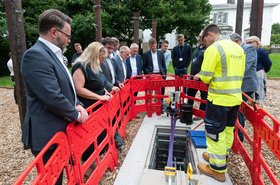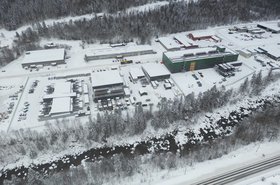The UK is still facing a significant digital divide, meaning communities have unequal access to the Internet and subsequently, education, business, and job opportunities.
This is particularly challenging in rural areas, where connectivity is poorest and the costliest to improve. While national fiber coverage reached 61 percent in January 2024, that of rural England and Scotland remains at 45 percent and 35 percent.
Over a third of rural residents (4.6 million) are considering moving to towns and cities, with a key reason cited being a lack of high-quality connectivity, according to a Virgin Media study published in July 2024. The UK is at risk of a rural exodus unless we can make it a more attractive destination for businesses and communities, which won’t be possible without leveling the playing field from a connectivity perspective.
The economic impact of investing in interventions that help digitally excluded communities is also well understood, with every £1 ($1.31) of investment made, producing an average return of c.£10 ($13.1) generated into the UK economy.
Fiber push
Despite its challenges, the case for investing in digital infrastructure in the UK still has merits. The UK has the highest level of fixed data consumption across Europe, at almost double the European average but is among the lowest for fiber adoption.
This divergence is because full fiber is still a relatively new phenomenon in the UK so there is still a much-needed customer education process that is underway. There is undoubtedly a market correction to come, as customer demand for fiber catches up with the recent burst of fiber supply.
However, with investment decisions in digital infrastructure driven by deployment costs and capital availability, it is unsurprising that less commercially attractive rural areas have endured historic underinvestment. The growing disparity there has demanded strategic government intervention.
The UK Government's subsidy scheme, Project Gigabit, which provides a one-off grant to selected operators building fiber networks in rural locations across the UK, aims to rectify this by achieving 100 percent gigabit-capable coverage across the whole of the UK by 2030.
Alternative network providers (altnets), with support from Project Gigabit, are therefore providing a solution to the digital divide. Through enhancing connectivity in left-behind areas, they are playing a key role in unlocking immense economic and social development to support people’s personal and professional growth and revitalize rural communities.
And yet despite the clear financial and societal benefits, the fiber sector is struggling.
From network coverage to commercialization
Investors have become much more selective when it comes to fiber operators, and not all are created equal.
Whereas 18 months ago all that mattered was “land grabbing,” any and all UK streets to roll out fiber, now the latest buzzword is “overbuild.”
In the frenzy of fiber construction activity, overbuilding - the occurrence of two or more fiber cables laid down the same street - has increased. This heightened level of competition makes customer uptake very unclear, and often renders the build uneconomical.
With this risk front of mind for operators and investors alike, build strategies are being rethought, often slowing or pausing rollouts entirely, and instead shifting to focus on acquiring and retaining customers.
Key performance metrics under the microscope are moving towards those linked to revenue generation, such as the number of customer connections and the average revenue per customer, rather than network scale.
Connecting people and places
There are definitely pros and cons to building rural fiber networks. On the one hand, by nature the construction process is more complex and expensive, but this typically means that there is little to no competition, leading to higher customer demand and lower overbuild risk.
The challenges are even more acute in areas that qualify for Project Gigabit subsidies, with barriers including challenging terrain, geography, and geology, which often increases costs and extends timelines. Due to the distances being covered, rural rollouts often also require more permits and wayleaves from multiple landowners, further increasing complexity.
Without subsidies, these projects would not be commercially viable, but with cost cover of between 60 percent to 80 percent of capex, a defensive position is created for contract winners, which increases returns for investors, while also supporting some of the most neglected rural communities.
In these cases, network commercialization is also likely to be more achievable and we are starting to see a growing evidence base of strong customer cohort penetration in these projects which supports that thesis.
As rural areas are less commercially attractive and more challenging to build in, they have long endured underinvestment and are often underserved. This provides an opportunity for alt-nets to make the most of customer demand and the lack of competition. Alt-nets, like Gresham House-backed Wildanet and GoFibre, are building in rural locations where competition is minimal. Collectively, they have won five Project Gigabit contracts, and are well placed to undertake further contracts, cementing their positions as the dominant alt-net in their respective regions.
These contracts are playing an integral role in leveling the playing field for rural communities, acting as an enabler for inward investment, and fostering long-term economic growth across the UK. They are bridging the digital divide, providing life-changing connectivity to communities where it may otherwise never be available.
In the current capital-constrained environment, it is this type of differentiated and defensible business model that is uniquely sustainable. As the market matures and consolidates, investors are increasing their understanding of the market’s strengths and of the factors that will lead to the makings of a successful operator.
The dawn of a new digital age
As we look to the future with the ongoing digitalization of almost all aspects of our lives, and the proliferation of AI, the use case for high-speed broadband is only increasing.
While the sector undoubtedly has its challenges with customer education and take-up, capital availability, and cost pressures, it’s worth remembering that the fundamental need for fiber as a household utility is only going to continue increasing.
There’s no doubt that there’s still a long way to go for the sector, and there is an ongoing role that the regulator must play in providing support through this rockier period.
The focus needs to be on making it easier and faster for the industry to deliver what we promised to disconnected rural communities by removing barriers such as increasing the ease of access to PIA, permitting, and wayleave availability, as well as limiting the abuse of market power, such as uneconomical overbuild by incumbents.
With more than 100 alt-nets in the UK, there is no doubt that the next buzzword will be “consolidation.” We expect the pace of both strategic and distressed corporate transactions to pick up in the coming years. Once the market stabilizes, its prospects are expected to improve, with an influx of new capital.
In fact, we are already starting to see some very selective subsidy-backed rural alt-net financings return to the market via the likes of Quickline and Wildanet, showing that investors are starting to discern between alt-net business models.
Significant effort and investment are required to bridge the digital divide and ensure equitable access to high-speed connectivity.
Alt-nets are enhancing connectivity in left-behind areas across the country, driving economic development, bolstering digital innovation, and supporting people’s personal and professional growth. Their success must remain a priority for the public and private sectors.







